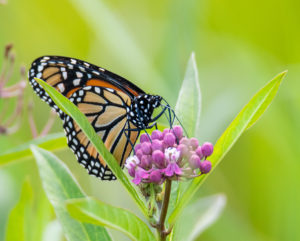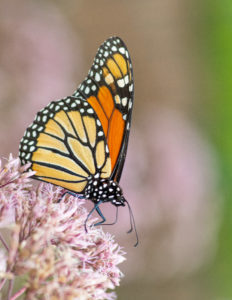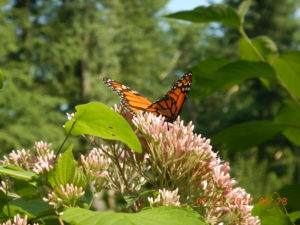The International Union for Conservation of Nature (IUCN) is the “global authority on the status of the natural world and the measures needed to safeguard it.” They are the organization who, along with their member organizations and legions of experts, determine which animals are endangered or facing extinction across the globe.

Just a month after we posted about celebrating and protecting pollinators across our area for National Pollinators Week, the IUCN announced that the migratory monarch butterfly is now endangered. Climate change and its effects (like increased wildfire activity and droughts), deforestation for agriculture and urban development, and an increase in the use of pesticides and herbicides have devastated the populations of this delicate insect. The IUCN estimates that 99.9% of the western population has decreased since the 1980s, while 84% of the eastern population has similarly been lost.

What makes the migratory monarch so susceptible is its reliance on only one plant on which to lay its eggs: the milkweed. And not only do migratory monarchs only lay their eggs on this plant, but it is the only thing their caterpillars eat as they mature.
While migratory monarchs aren’t prevalent in our region, they travel almost 2,500 miles up and down North America throughout the year and we are in their breeding range. The migratory monarch is related to the local monarch species we see at most of our project sites. To help all monarchs (and other pollinators), Team GV plants milkweed at many (if not all) of our restoration and preservation sites. Milkweed is a native plant to our region, which lets it grow and thrive without disrupting local ecosystems. It not only supports monarchs, but also other regional pollinators.

As Anna Walker, member of the IUCN SSC Butterfly and Moth Specialist Group and Species Survival Officer at the New Mexico BioPark Society, said, “…We all have a role to play in making sure this iconic insect makes a full recovery.”
So, what can you do? You, too, can plant native milkweed where it will prosper. You can reduce your pesticide use and always choose the most non-toxic pesticide possible. You can support preservation efforts to protect native habitats for all their many residents, including monarch butterflies. If we work together, maybe we can help the migrating monarch population grow and preserve it for the future.



